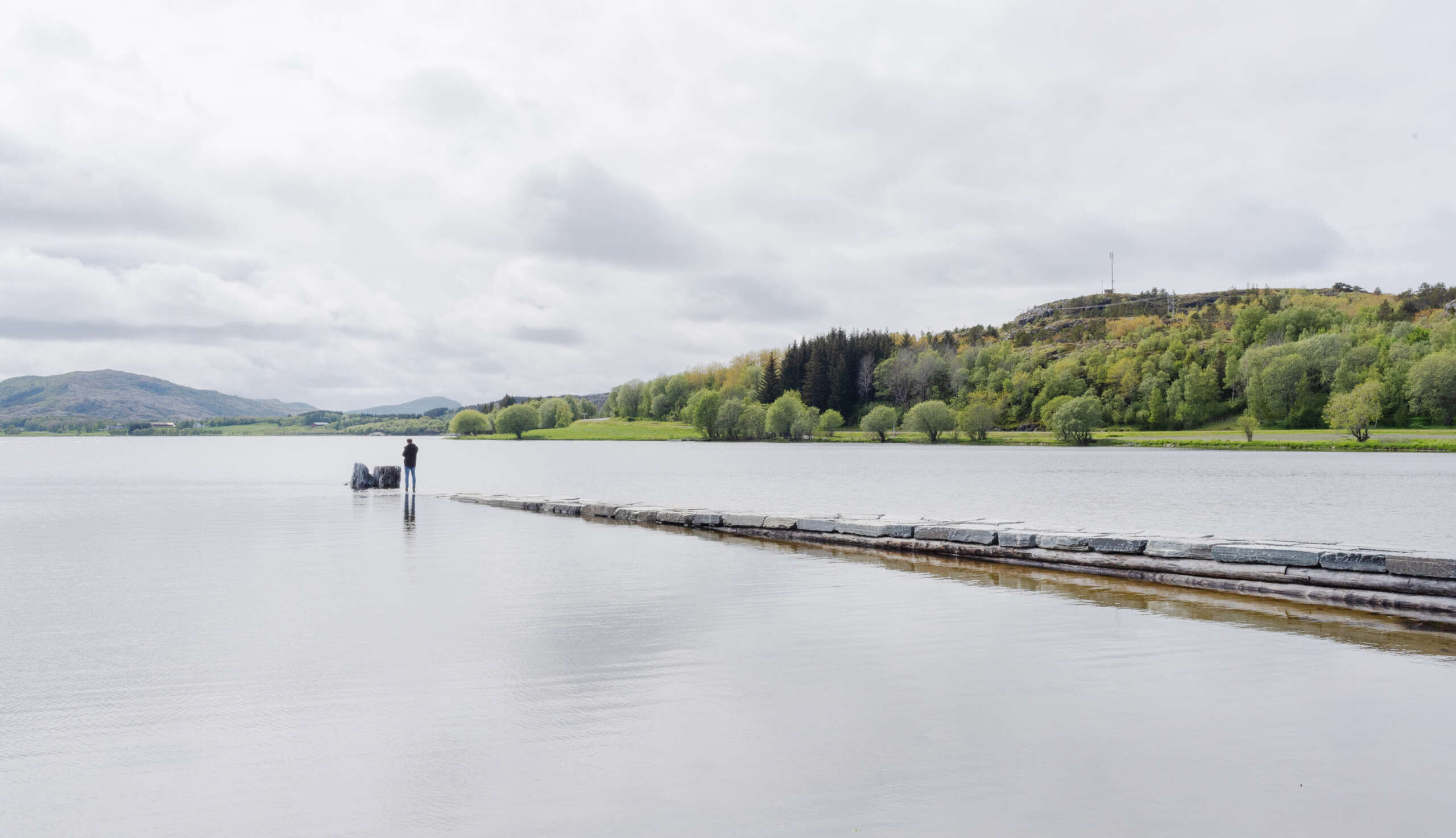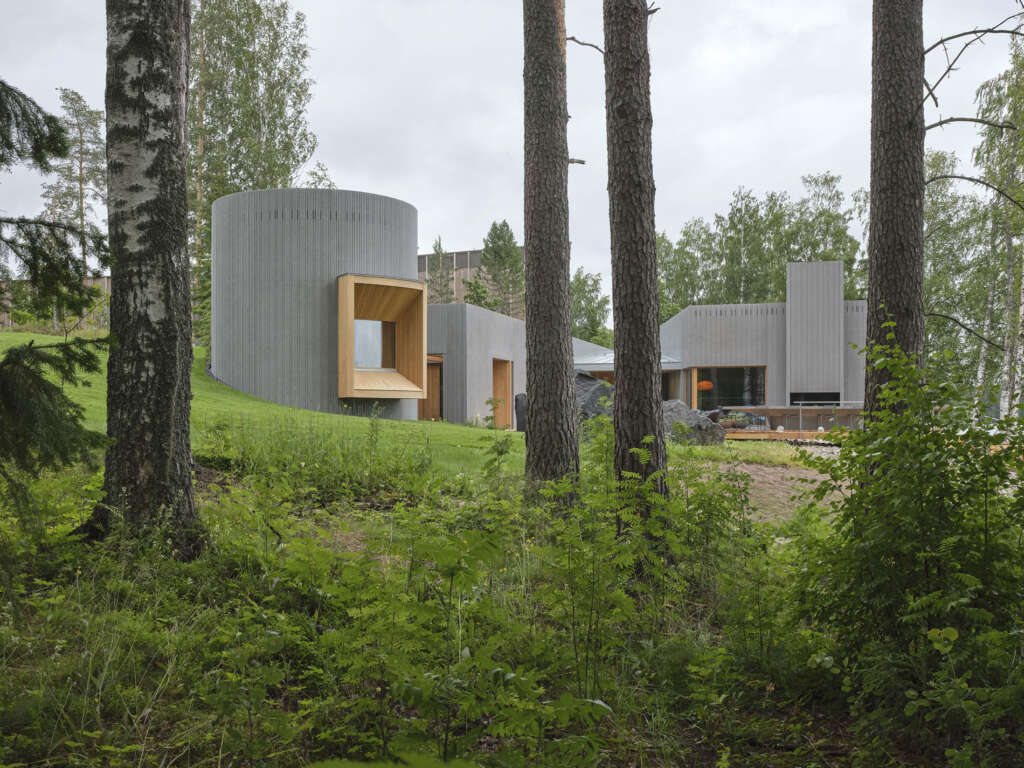
Serlachius Taide-Sauna (Art Sauna)
Architect: Mendoza Partida, BAX studio
Location: Mänttä, Finland
Type: Sauna
Year: 2022
Photographs: Marc Goodwin, Archmospheres
“Atmosphere may be a conjunction of personal and emotional impressions of space, but this conjunction is reproduced by the objective assembly of materials, spatial proportions, the aging of the materials, the connections of the materials and the connections to the place or other buildings, rythms, light, etc.” – Gernot Böhme
Scenarios of Dialogue Between Art, Nature and Architecture
The following description is courtesy of the architects. The new art-sauna space is understood as a continuation of the emotional journey of the whole Gösta Serlachius museum. Museum visitors experience is more than the act of observing art inside an ad-hoc space. Instead, they get embraced by a chain of moments in which
landscape, art, and architecture blend. Is in that sense that the new Art-Sauna extends that experience into a new, more delicate, and domestic scale.
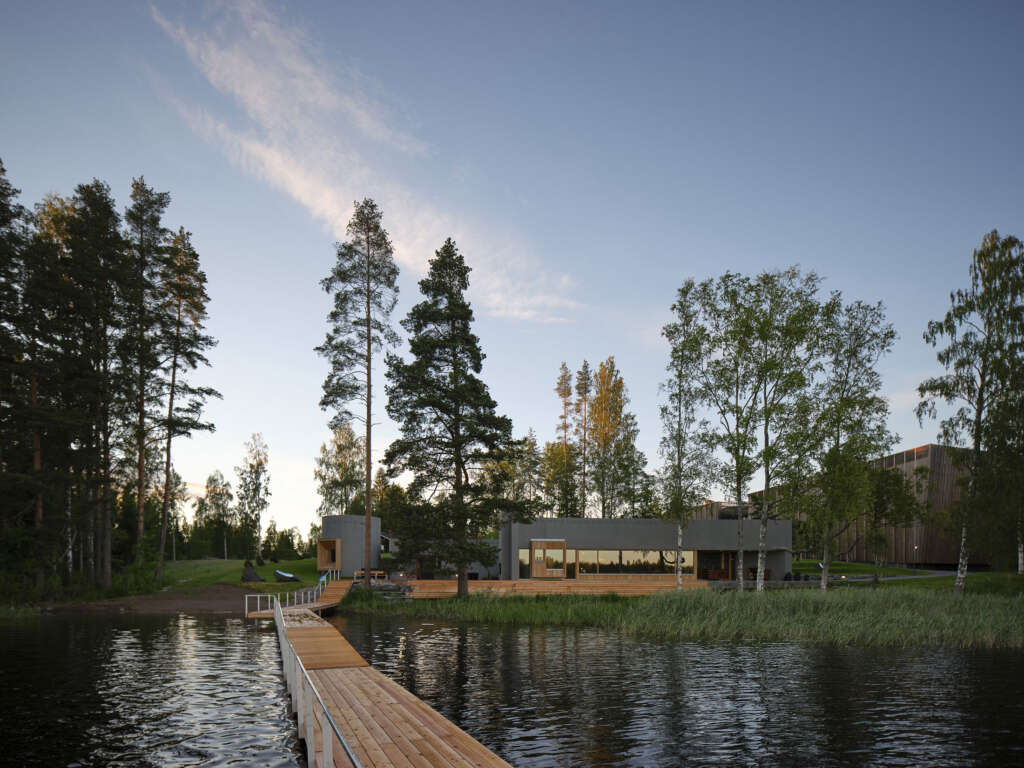
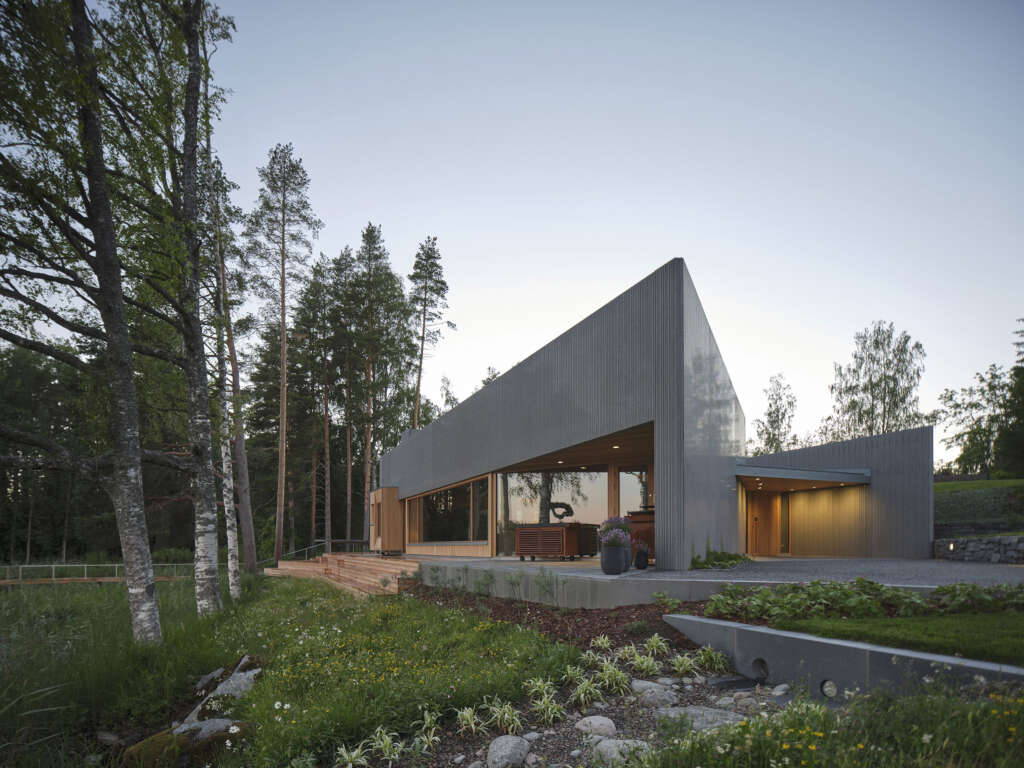
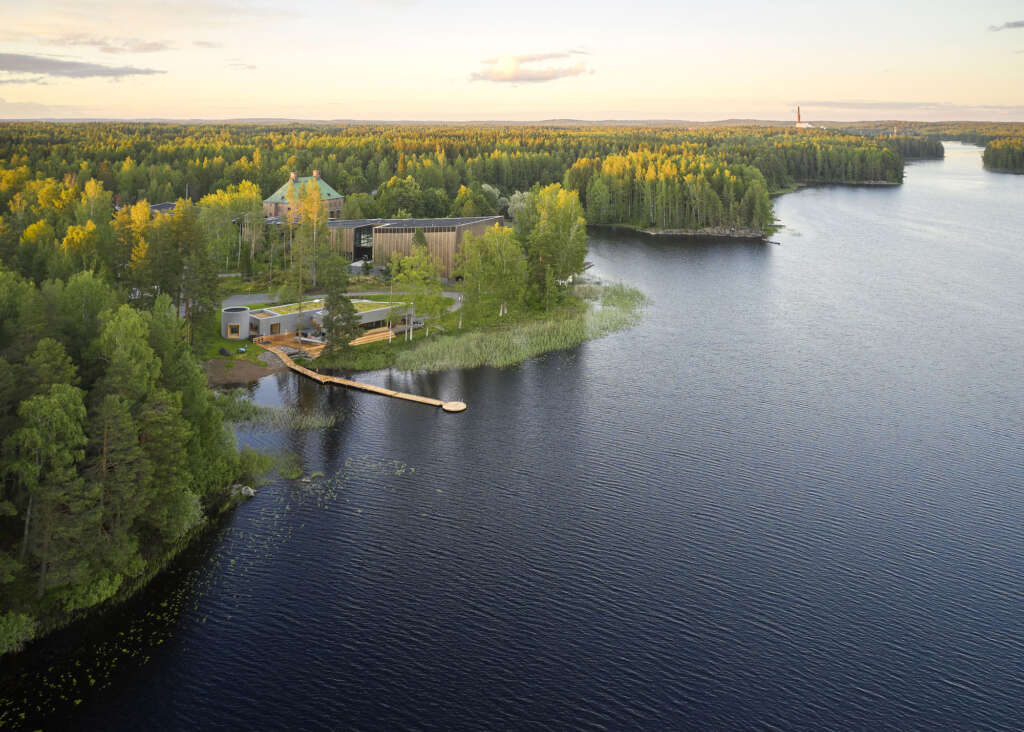
The Place and the Journey
One of the main architectural strategies implemented was the merging of the new Art-Sauna space with the topography. The new constructions becomes part of the landscape. In the southern part of the park surrounding the Museum, at a point where a little path approaches the water level, a very discreet bifurcation is created that gently leads visitors to a “semi-secret” place. It is at this point, from the way of approaching the place, which the Art-Sauna experience begins.
The journey leads the visitor to a cosy, discreet porch, a previous step of what lies beyond. The entire journey, inside and outside, is defined by the constant presence of the Finnish landscape. The solid architecture, made of natural and artificial stone, frames the privileged views and works as the support for art pieces specially crafted for this project. There is careful work in the way this construction integrates with the ground. The retaining walls give shape to the interior spaces and generate “patios”. Those patios are the mediators where light, views and art surprisingly embrace visitors on their journey.
In terms of program, it was a design decision to break with the obvious scheme of linking changing room area and the sauna room (both interior spaces). Instead, the visitor is led through a singular, surprising space, an exterior vestibule, a courtyard like the atrium of the Domus of the Roman temple. In this case, the temple would be the cylindrical construction dedicated to housing the sauna room.
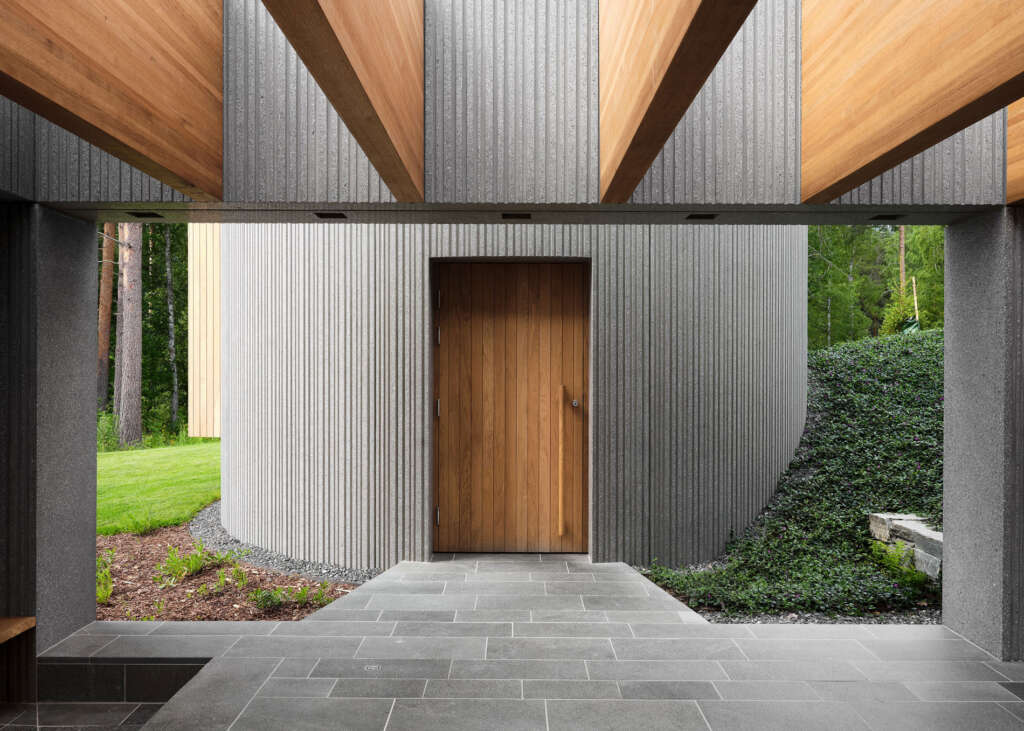
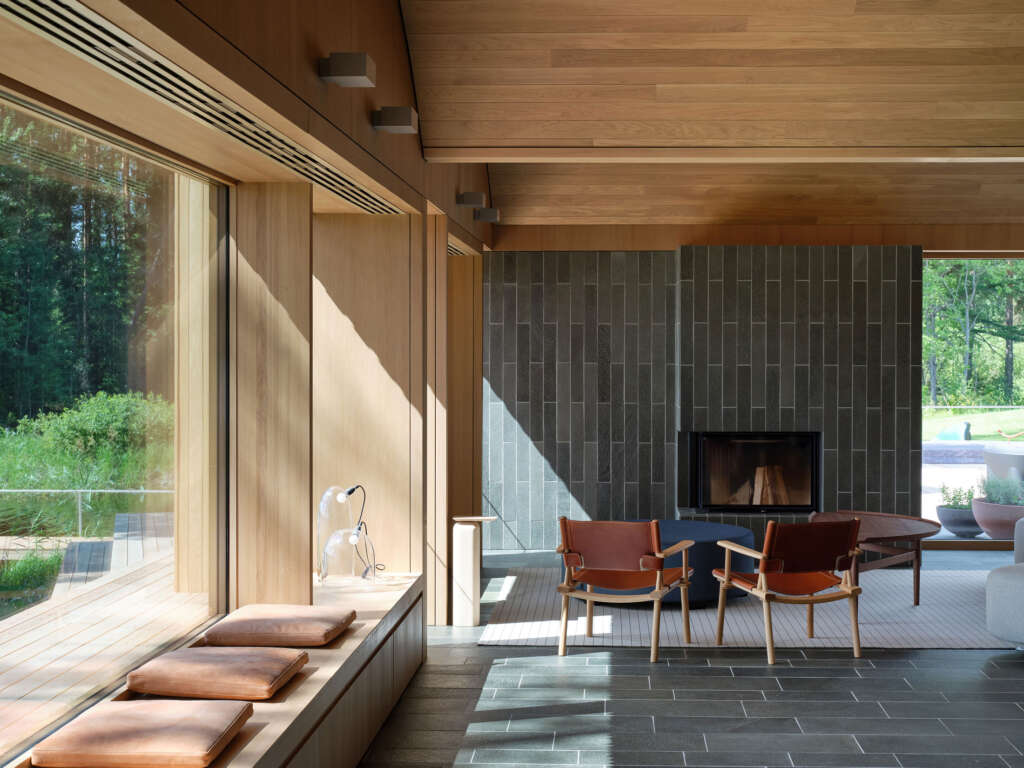
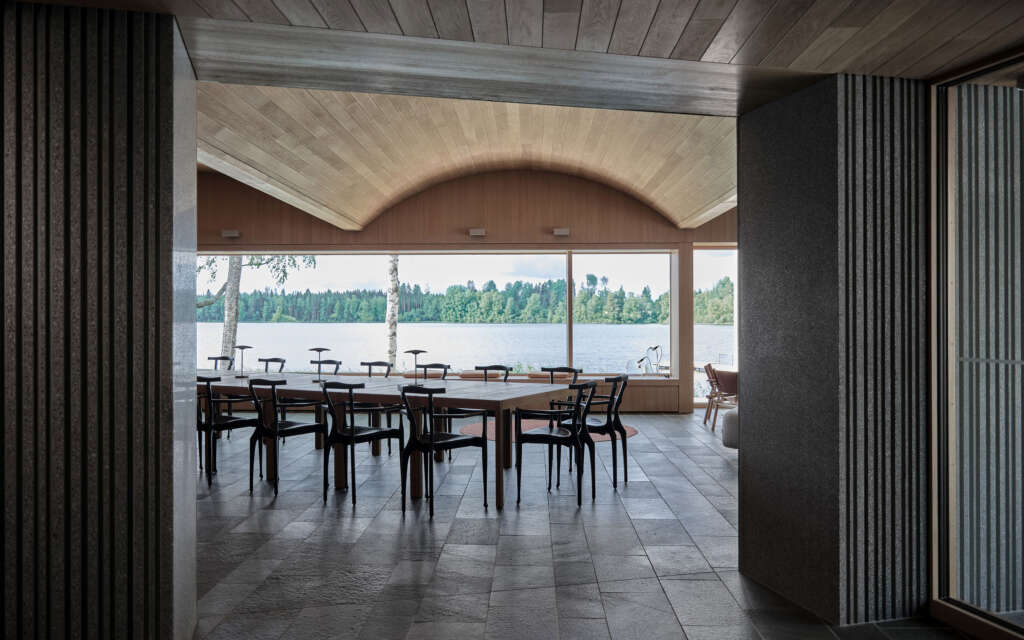
The interior of the sauna temple, through its geometry, offers an intimate atmosphere of community, a feeling of belonging. The interior is crafted with delicate details, such as the wooden profiles that define seats, coverings and simultaneously orient the view that opens onto art and nature with the lake and the horizon as the perfect background for an inspiring image.
The large terrace is configured on three sides, either by the construction or by the surrounding nature. It opens up completely towards the lake in the immediate vicinity.
The terrace is permanently inhabited by the “Candela table”. This piece was specially designed in memoriam of the Spanish architect Félix Candela, who elegantly combined geometry and statics in spatial structures centrally supported on a single point. The Candela table has been crafted with the same material that covers the facades of the building. Prefabricated concrete pieces that abstractly, through their surface treatment, enhance the simplicity of their architectural geometry.
Back to the interior, the lounge public zone takes the idea of a very domestic and cosy atmosphere. This ambient preserves the scale of a home, but at the same time could be programmed to allocate different configurations and arrangements, from smaller size tables, to a long table for up to 30 people.
This space is covered by a singular system of 4 wooden vaults that has been carefully worked to give continuity and amplitude to the space. The interior space embraces and fluidly links the different ambiences (kitchen-dinning-lounge). This fluidity is contrasted with a large 8m long window that is capable of horizontally framing the landscape and bringing it into the interior atmosphere in a surprising way.
The dining area is supported by a kitchen area, a wine tasting area around a circular table specially designed for mobile arrangements and a sitting area by the fireplace. Because of its location next to the terrace, this fireplace gives a double service by also opening up to the outdoor activities on the terrace.
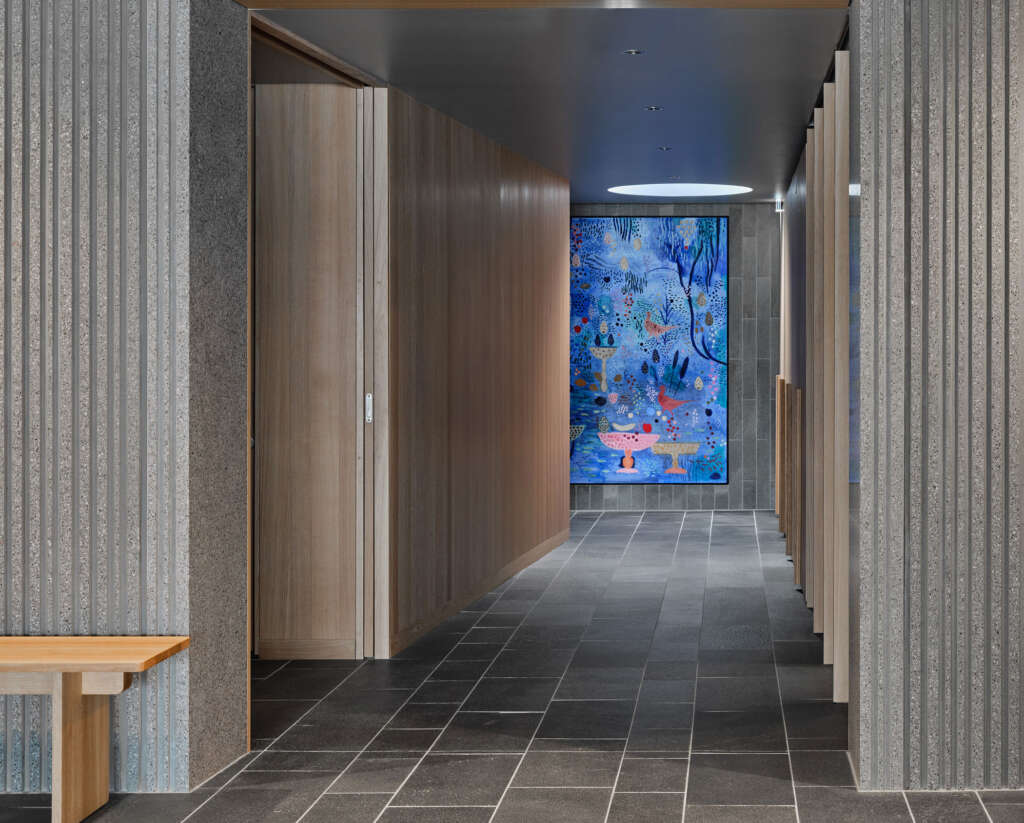
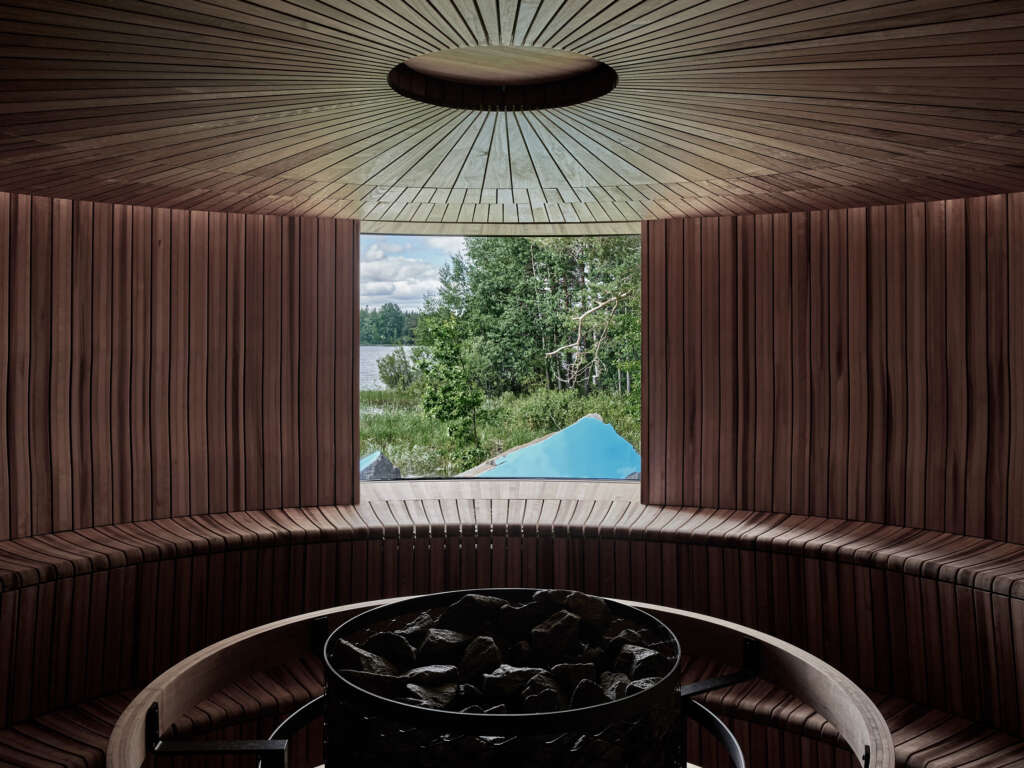
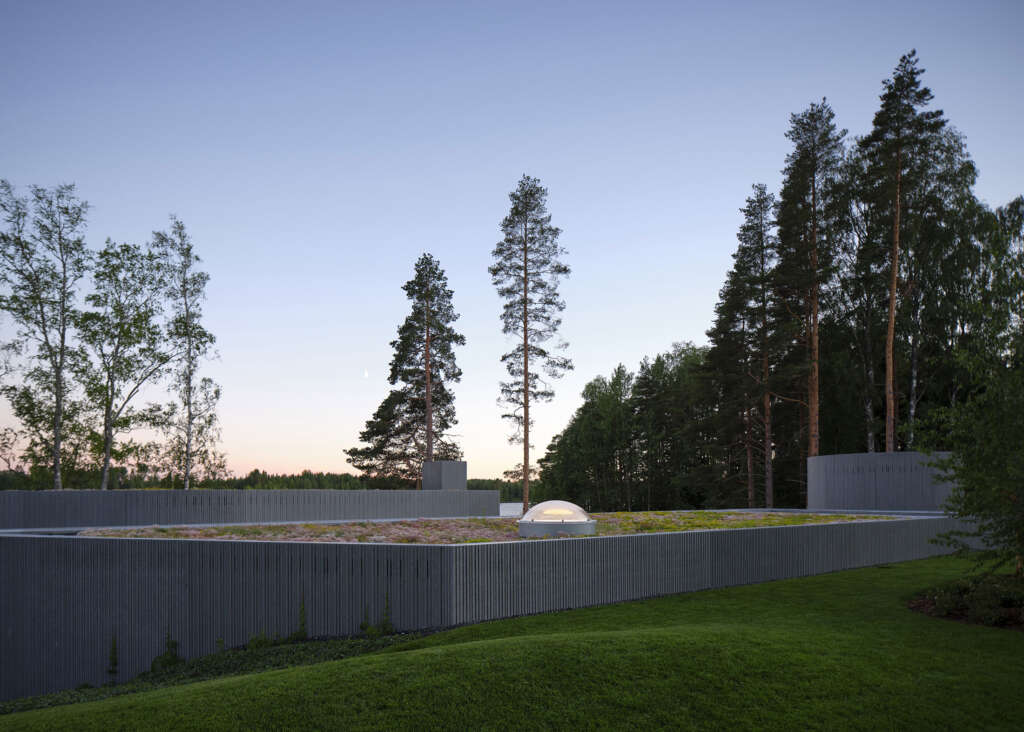
Material Logic in Section
The logic and common sense used in the Gösta museum drove this new project. The museum was built understanding and promoting the construction of wood. It is a light construction related to the forest, but supported by a solid base of concrete and stone that belongs to the ground. The new Art Sauna belongs to the ground, and this fact opens up a world of possibilities to challenge traditional construction. Being in contact with the ground, the use of natural stone and textured artificial stone for walls made sense. This solid material was carefully crafted, looking for a fine and soft perception, close to a domestic environment.
Project Details
- Surface: 310 m2, 1.200 m2 (landscape)
- Client: Serlachius Art Foundation
- Site: Mänttä, Finland
- Architecture:
- Mendoza Partida: Mara Partida, Héctor Mendoza
- Project team: Oscar Espinosa, Sereine Tremblay, Marc Sánchez, Alejandro Álvarez, Germán Bosch, Olga Bombac
- BAX studio: Boris Bezan
- Mendoza Partida: Mara Partida, Héctor Mendoza
- Local Partner: Planetary Architecture Oy
- Project team: Pekka Pakkanen, Anna Kontuniemi
- Landscape: Gretel Hemgård
- Art curator: Laura Kuurne
- Interior desing, ff&e – os&e: Rafael Berengena Maynegre
- Photos: Marc Goodwin, Archmospheres

